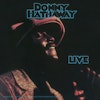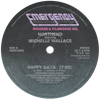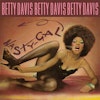Live recordings stamp a moment from a day and press it into a kind of eternity. You can hear it in the temperament of the musicians, the urgency of the playing, the energy in the room. That room, Seán Street writes, “is more than an inhabited physical space, it is a field of consciousness.” Donny Hathaway Live reaches to its edges and brings a whole lot of life along with it.
Unlike most conventional “live” records, this is not a document of a single night, or a single room. The A-side was recorded at the Troubadour in Hollywood, the B-side at the Bitter End in New York, several months apart. Instead, it is a document of liveness, of something more integral to who Donny Hathaway was as an artist.
With a spiritual and musical affinity for gospel and the call-and-response tradition, Hathaway knew what it meant to communicate. By mid-1971, he was beginning to come into his own, honing his flair for connection and trained musical ease into a formidable performance craft.
Videos of Hathaway performing, of which there are few online, show a man whose hands move effortlessly across the keyboard, whose voice soars without breaking stride. Onstage, he was as influenced by the preachers of the pulpit as the soul musicians whose world he was a part of. “My ambition is to get standing ovations everywhere I play,” he said in an interview in August 1971. No doubt he succeeded here. As bassist Willie Weeks noted afterwards, people were swaying like a wheat field in the wind.
Something about this image sticks because it conveys such communality of experience. In her 33 1/3 book about the record—a superlative study of the man and the album to which this piece owes much—Emily J. Lordi describes the recording as being “as much about the synergy between the artists and the audience as it is about the music itself.” Seeing the low-lit informality of the band on the album’s back cover, it’s clear there was no hierarchy. When Hathaway played, he did so in dialogue with those he was playing for.
Put another way, Hathaway’s performances were like acts of service towards Black intimacy and collectivity. “Intimacy…is the state of experiencing another’s wholeness without consuming it,” Malcolm James writes. On the first of those two nights, you can hear it in the laughs, whoops, and screams that fly around the Troubadour like squibs—and perhaps most famously, in the impromptu chorus that joins him to close out “You’ve Got a Friend.” Donny Hathaway opened himself up and let everyone in.
On the second, you can also hear it in the thickness of the sound. “Intimacy is not a question of public or private but at essence a product of relation, of a reciprocity so fundamental it can be intimated in the barest of gestures,” James continues. Placed between the stage and the audience, the mics at the Bitter End captured the air in the room—the deep, scarcely perceptible resonance of a few hundred vibrating bodies, bathed in soul ballad “We’re Still Friends.” Donny Hathaway emptied himself out so that everyone could be full.
When he heard the recordings back, Hathaway is said to have been so impressed by their vitality that he turned to producer Arif Mardin and said: “Oh, it sounds like I’m in the room.” Listen to Donny Hathaway Live fifty years on, and it sounds like you are too.


